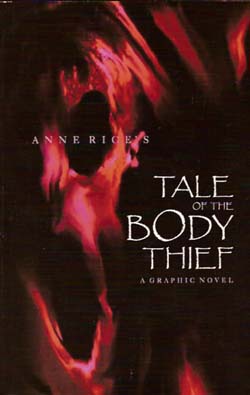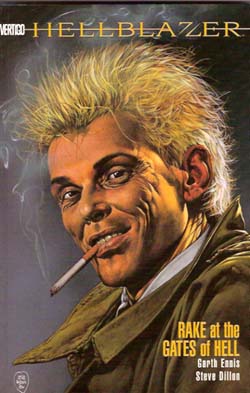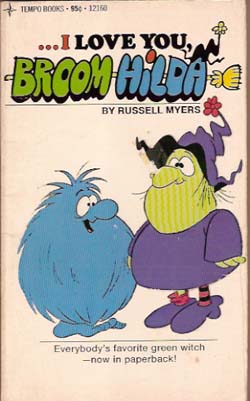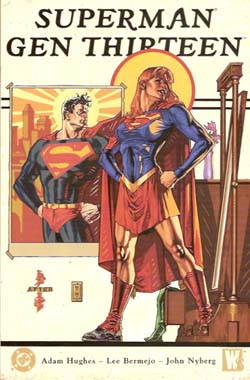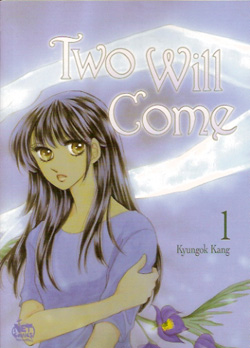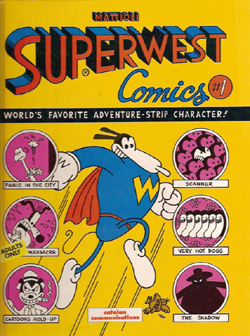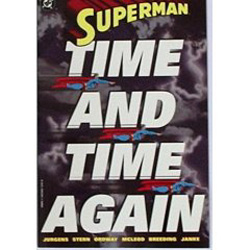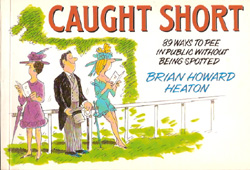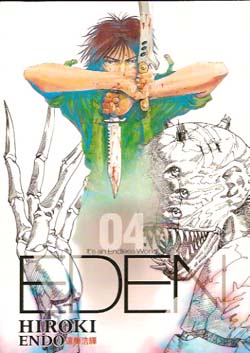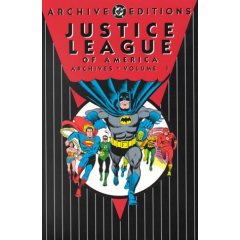
By Gardner Fox, Mike Sekowsky & various (DC Comics)
ISBN: 1-56389-043-7
After the actual invention of the comicbook superhero – for which read the launch of Superman in 1938 – the most significant event in the industry’s progress was the combination of individual sales-points into a group. Thus what seems blindingly obvious to us with the benefit of four-colour hindsight was proven: a plethora of popular characters could multiply readership by combining forces. Plus of course, a whole bunch of superheroes is a lot cooler than just one – or even one and a sidekick.
And so the birth of the Justice Society of America in the winter 1940 issue of All Star Comics is rightly revered as a true landmark in the development of comic books, and when Julius Schwartz revived the superhero genre in the late 1950s, the key moment came with the inevitable teaming of his reconfigured mystery men.
And that was issue #28 of The Brave and the Bold, a swords-and sandals classical adventure title that had recently become a try-out magazine like Showcase. In 1959, just before Christmas, the ads began running: “Just Imagine! The mightiest heroes of our time… have banded together as the Justice League of America to stamp out the forces of evil wherever and whenever they appear!â€
Released with a March 1960 cover-date, that first tale was written by the brilliant and indefatigable Gardner Fox and illustrated by the quirky, understated Mike Sekowsky with inks by Bernard Sachs, Joe Giella and Murphy Anderson.
‘Starro the Conqueror’ saw Flash, Green Lantern, Wonder Woman, Aquaman, and J’onn J’onzz, the Manhunter from Mars defeat a marauding alien starfish whilst Superman and Batman stood by just in case (in those naive days editors feared their top characters could be “over-exposed†and consequently lose popularity). The heroes also picked up a typical American kid as mascot. Snapper Carr would prove a focus of controversy for decades to come.
Confident of his material and the superhero genre’s fresh appeal Schwartz had two more thrillers ready for the following issues. B&B #29 saw the team defeat a marauder from the future in ‘The Challenge of the Weapons Master’ (inked by Sachs and Giella) and #30 saw their first mad-scientist arch-villain in the form of Professor Ivo and his super android Amazo. ‘The Case of the Stolen Super Powers’ by Fox, Sekowsky and Sachs ended their tryout run. Three months later the new bi-monthly title debuted.
Although somewhat sedate by modern standards, the JLA was revolutionary in a comics marketplace where less than 10% of all sales featured costumed adventurers. Not only public imagination was struck by hero teams either. Stan Lee was apparently given a copy of Justice League by his boss and told to do something similar for the tottering comics company he ran – and look what came of that!
‘The World of No Return’ in issue #1 introduced trans-dimensional tyrant Despero to bedevil the World’s Greatest Heroes, and once again the plucky Snapper Carr was the key to defeating the villain and saving the day. The second issue, ‘Secret of the Sinister Sorcerers’, presented an astounding conundrum when the villains of Magic-Land transposed the location of their dimension with Earth’s, causing the Laws of Science to be replaced with the Lore of Mysticism. The true mettle of our heroes was shown when they had to use ingenuity rather than their powers to defeat their foes, and by this time Superman and Batman were allowed a more active part in the proceedings.
Issue #3 introduced the despicable Kanjar Ro who unsuccessfully attempted to turn the team into his personal army in ‘The Slave Ship of Space’, and with the next episode the first of many new members joined the team. Green Arrow saved the day in the science-fiction thriller ‘Doom of the Star Diamond’, but was almost kicked out in #5 as the insidious Doctor Destiny inadvertently framed him ‘When Gravity Went Wild!’
This first deluxe hardcover concludes with ‘The Wheel of Misfortune’ a mystery thriller that introduced the pernicious and persistent master of wild science Professor Amos Fortune, who would return time and again to bedevil many incarnations of the League, and is perhaps their most underrated foe.
These tales are a perfect example of all that was best about the Silver Age of comics, combining optimism and ingenuity with bonhomie and adventure. This slice of better times also has the benefit of cherishing wonderment whilst actually being historically valid for any fan of our medium. And best of all the stories here are still captivating and enthralling transports of delight. This is a glorious “must-have-item†for every fan and thrill-seeker whatever their age.
© 1960, 1961, 1992 DC Comics. All Rights Reserved.

